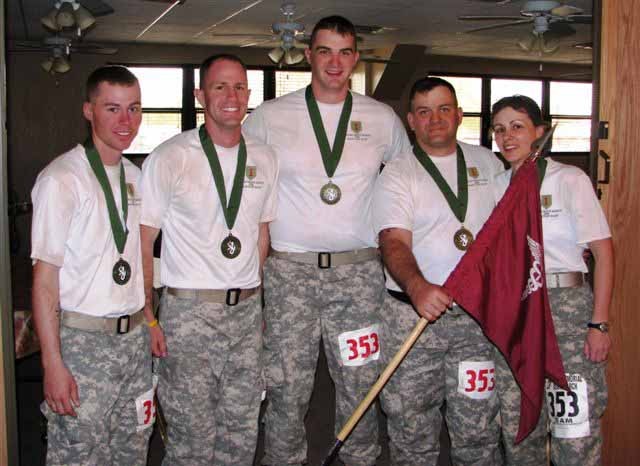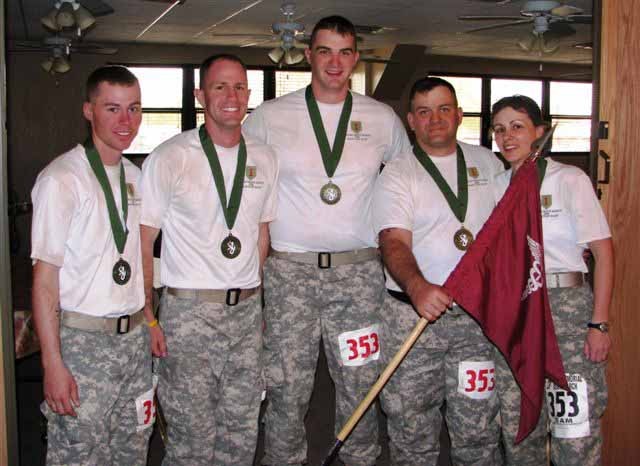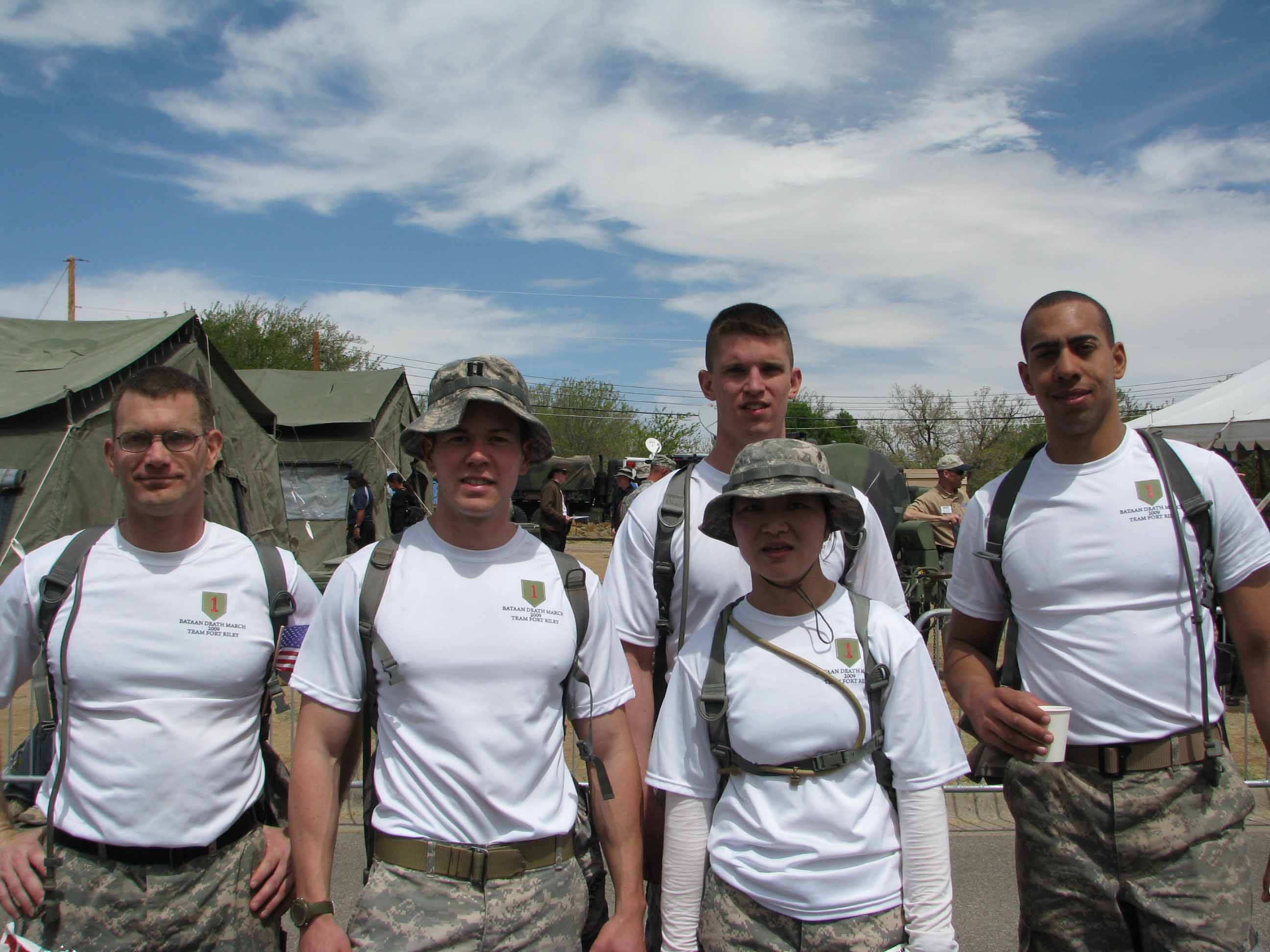FORT RILEY, Kan. - Fort Riley teams took first in the heavy and light divisions at the 20th Annual Bataan Memorial Death March held at White Sands Missile Range, N.M., on March 29. The team from Irwin Army Community Hospital finished first in the heavy division, while the team from 2nd Battalion, 16th Infantry Regiment, 4th Infantry Brigade Combat Team, finished first in the light division.
Both teams participated in the 26.2-mile march through the arid, high desert terrain at White Sands Missile Range. The team from 2nd Bn., 16th Inf. Regt. carried rucksacks with less than 35 pounds, and the IACH team members each carried 35 pounds in their rucks. Both teams were comprised of five members with a designated team captain.
The terrain on the dusty route traversed through the hills and washes of the New Mexican desert, with elevation ranging from 4,100 to 5,300 feet. The route was not meant to be easy - it was designed to symbolize and memorialize the horrors experienced by American and Philippine prisoners of war during World War II and capitalize upon the spirit of survival that kept the prisoners alive.
"The greatest thing was the veterans who came up to shake our hands," said Capt. Steven Ackerson, 2nd Bn., 16th Inf. Regt. fire support officer. "But, what we did pales in comparison to what these guys experienced. Just to be able to honor what they did made it a great experience."
According to Capt. Rachael Wienke, IACH, her team began preparing for the event with weekly marches in November 2008.
"From the very beginning, we carried 35-pound rucks, and emphasized the team ethos. We moved as fast as our slowest person, and with that spirit, we moved ahead while other teams were disqualified for breaking apart."
The team trained at Fort Riley, so acclimating to the lack of oxygen at 5,300 feet gave the Soldiers a little trouble, Wienke said.
The IACH team encountered some stiff competition from a Canadian team within one mile of the finish line. An American Soldier from a competing team had fallen out from a heat injury, and when the Soldier recognized the Medic guidon, he called out for help. Several IACH medics rendered assistance and the Canadian team moved past and took the lead.
With the patient stabilized, the IACH team, which was suffering badly from its own injuries and equipment malfunctions, had to resort to a sandy shuffle and pick up the pace to regain the lead. The IACH team was successful and beat the Canadians by just two minutes.
Spc. Matthew Giersdorf, IACH, said the memorial march was not like any other race, because, in memory of the 1942 survivors, quitting was not an option.
"Seeing some of those American heroes at the start of the race drove the reality home, and when we felt like we had hit the wall we reminded ourselves of what the POWs encountered in 1942," Giersdorf said.
This was Wienke's fourth Bataan Memorial Death March. She described the scenario as jubilant but somber with surviving POW's present throughout the route to offer encouragement.
Many of the survivors are now in their 80s and 90s and still bear the scars evidenced by the terror of their captivity. Many Desert Storm and Global War on Terrorism veterans also participated and observed, to include one gentleman who was a double amputee and visually impaired.
"I march and inspire others to participate so as to keep the memories and purpose of all Soldiers alive and vital, "Wienke said. "That is really why we are here."
The BMDM was begun in 1989 by a group of Army Reserve Officer Training Cadets at New Mexico State University in honor of a group of World War II veterans who were held as prisoners of war by the Japanese. After 75,000 American and Filipino Soldiers surrendered at the end of the Battle of Bataan, in April 1942, they were forced to march about 90 miles to another camp. The POWs marched for days through the scorching heat of the Philippine jungle. During the grueling march, more than 21,000 Soldiers died or were killed by the Japanese.
This year's BMDM was the largest yet. What began as a college project with about 100 participants has grown to over 5,300 participants, with teams from Great Britain, Germany, Austria, South Korea and Canada.
Spc. Shantelle Campbell, 4th IBCT PAO, contributed to this story.






Social Sharing